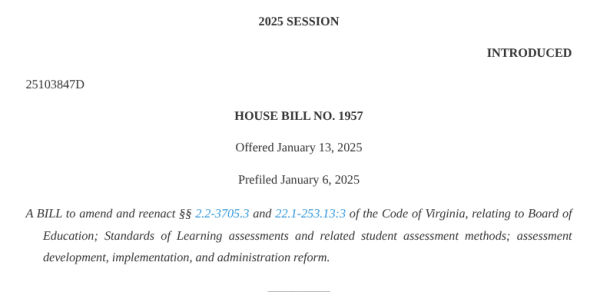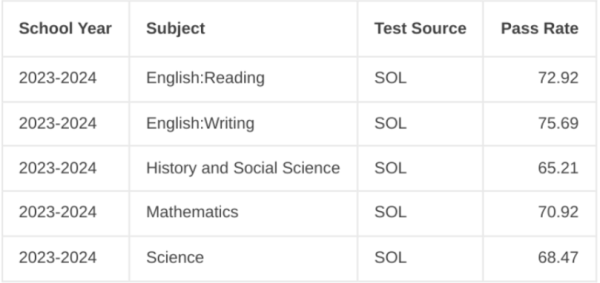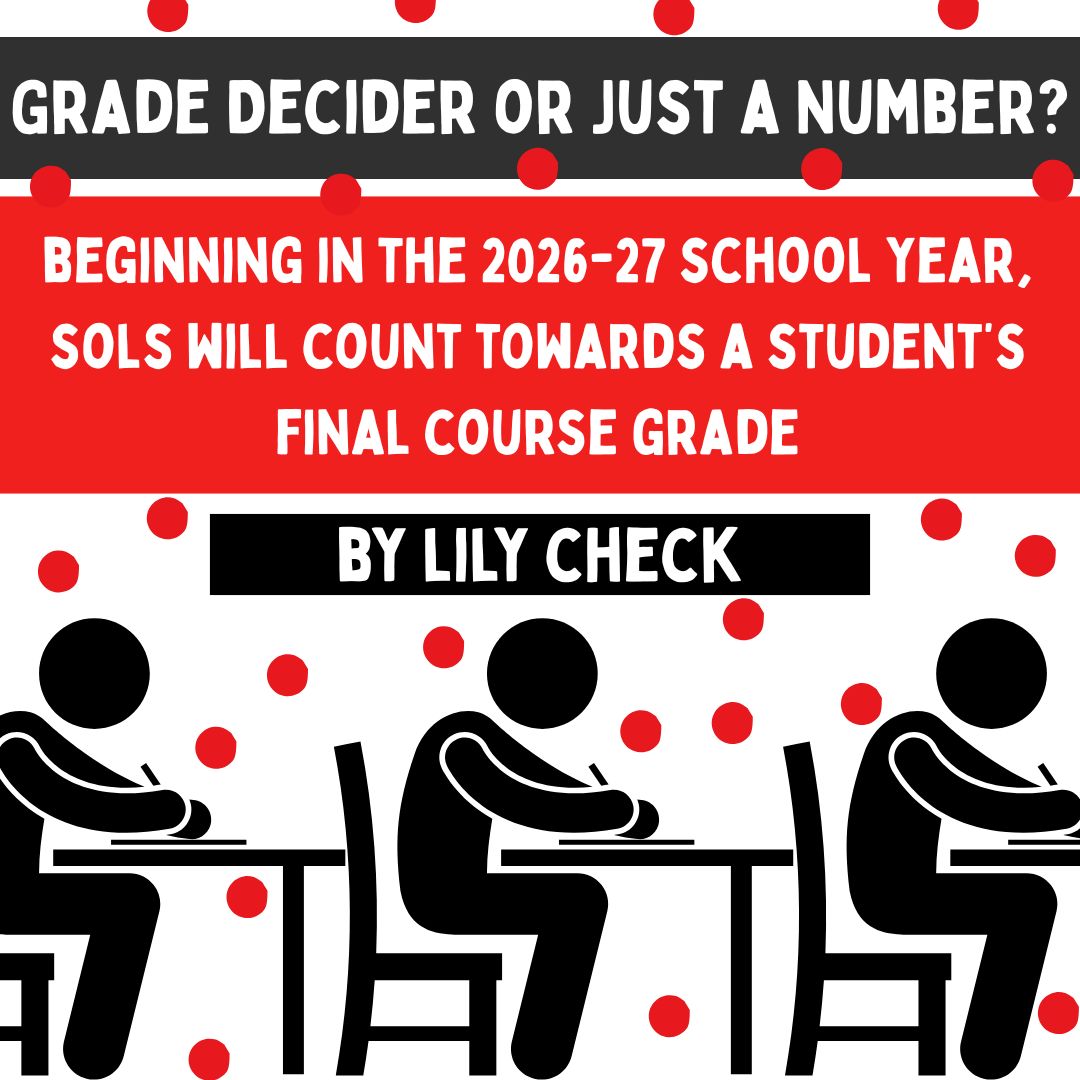Students attending one of Virginia’s numerous public schools become more than accustomed to Standards of Learning tests (SOLs), end-of-course exams given to assess student learning on material needed for subsequent education and beyond. Starting in third grade and continuing through high school, SOLs are currently scored on a 600-point scale and do not count towards a student’s final course grade, but beginning in the 2026-27 academic year, this framework will be altered.
On May 2, 2025, Governor Glenn Youngkin approved legislation to make Standards of Learning tests “account for at least ten percent of a student’s final [course] grade,” additionally stating that SOLs will be “scored on a 100-point scale in accordance with statewide scoring rubrics.” The legislation also requires SOL tests to be made more publicly available after they are administered, citing the increasing demand for student preparation materials.

Many teachers reported being surprised by these changes, as there was no notice given by the school district or the Department of Education in regards to these updates. In fact, some educators were only made aware of these changes by students discussing it in class.
“I found out during a meeting,” said teacher Nicholas Dimascio. “There are always changes to standardized testing to accommodate students in order to help them succeed. I am not surprised by these changes. As teachers, it is our job to be able to adapt to any classroom changes and modifications on assessments/standardized testing.”
By making SOLs count towards a student’s final course grade, the Department of Education aims to improve testing results with the hope that students will take preparation and success more seriously. According to WTKR, for the 2023-24 school year, “the pass rate [for the state of Virginia] for the writing [SOL] was 60 percent.” During the 2024-25 school year, however, pass rates at Salem were above average with a 94% pass rate for English reading, 91% pass rate for English writing, 92% pass rate for mathematics, and 81% pass rate for science.

“Students will start to study more efficiently, which will lead to better testing results,” said freshman Jordyn Falcon, who will have her English SOLs count towards her final course grade in the school year 2026-27. “I will prepare more just because I know it will count towards my grade.”
Many students expressed that although the Department of Education’s intentions are understandable, these changes will likely make students more apprehensive about test-taking. Students will now have to be concerned about passing their SOLs with high marks instead of merely focusing on passing.
“Making SOLs count towards final grades will make me more nervous about doing well,” said freshman Ali Webb, who recently took her Biology SOL. “Personally, I am already anxious before an SOL, but making it count towards my final grade would make me more nervous because I value my grades. I know others value their grades as well.”
Furthermore, beginning in the 2026-27 school year, Standards of Learning tests will be based on a 100-point scale instead of a 600-point scale. Currently, a failing mark is indicated by a score less than 400, a pass proficient mark is indicated by a score between 400 and 500, a pass advanced mark is indicated by a score between 500 and 600, and a perfect mark is indicated by a score of 600.
“I do not necessarily agree with the SOLs being on a 100-point scale because when they are on a 600-point scale, scores can vary,” said Webb, explaining that a broader scale allows for an individualized approach to remediation. “Schools can better identify where and what subjects students need more help in.”
However, some students believe that switching to a 100-point scale will offer more benefits and is more reasonable than continuing to implement the 600-point scale. Freshman Kasey Weigl, for instance, shares the notion that it will be easier for students to evaluate their performance if SOLs are scored out of 100 points.
“If out of 100 points, students can easily tell how many correct questions they need to answer to pass,” said Weigl.
Although the effects of SOLs accounting for a small percentage of a student’s final course grade remain largely unknown, it is certain that teachers and students alike will increase the time allotted for preparation. While it may be difficult for teachers to squeeze in extra review time, according to Dimascio, “teaching is a constant movement,” and the adjustment is more than necessary.
“Teachers should approach teaching as a constant movement in which we are always changing or modifying what content is being taught for a certain subject,” said Dimascio. “Teachers should still approach the way they feel comfortable and successful when delivering content to students.”
Students have until the beginning of the 2026-27 school year until this legislation goes into effect, but until then, educators and school districts statewide continue to mull over how these updated policies will impact the classroom. Feel free to let us know your opinion regarding the passing of House Bill No. 1957 in the comments.







